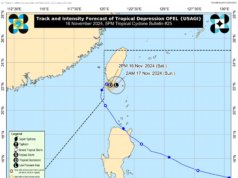Now, there is ample reason for you to cover your nose when you sneeze. It's flu season, after all, and the Centers for Disease Control and Prevention
Now, there is ample reason for you to cover your nose when you sneeze. It’s flu season, after all, and the Centers for Disease Control and Prevention have made it quite clear they don’t want you spreading your germs with reckless abandon.
But let’s not go overboard here, people.
In a report Monday in the journal BMJ Case Reports, several ear, nose and throat specialists detail the woes of a man who tried to entirely stifle a strong sneeze. And those woes aren’t exactly pretty.
The unnamed patient in question — a 34-year-old described as „previously fit and well“ — attempted to stop a particularly forceful sneeze by „pinching the nose and holding his mouth closed.“
Not long afterward, he noticed something was wrong.
It hurt when he swallowed and he observed a „change of voice.“ What’s more, his neck had swollen and, when he tried to move it, produced an unsettling popping and crackling sensation.
As it turns out, his doctors noticed it too, once he had been admitted to the emergency department at Britain’s Leicester Royal Infirmary. X-rays revealed the cause: little „streaks of air“ embedded in the soft tissue of his neck, conditions known as subcutaneous emphysema and pneumomediastinum.
In other words, by trying to suppress the full force of his sneeze the man literally ruptured his throat. The air that sneeze would have blasted forth instead made its way into his soft tissue as tiny bubbles.
But don’t panic: After at least a week or so of recovery the man was well enough to leave the hospital — with „advice to avoid obstructing both nostrils while sneezing,“ Yang adds — and his follow-up two months later revealed a clean bill of health.
It should be noted that this is a unusual case. In fact, Dr. Zi Yang Jiang, a head and neck surgeon who was not involved in the report, tells The Associated Press that such an incident is „exceedingly rare,“ and that he sees just one or two such cases a year.
That doesn’t mean it’s easy — or recommended — to stamp a sneeze out.
„It’s powerful,“ allergist Eli Meltzer told NPR’s Nancy Shute. „We actually blow out the sneeze at 40 mph. The discharge can go 20 feet. And it’s said that 40,000 droplets can come out when you spritz with the mouth and the nose when you sneeze.“
The moral? As the doctors put it in Monday’s report: „Halting sneeze via blocking nostrils and mouth is a dangerous manoeuvre and should be avoided.“
So, next time you feel that familiar tingle behind the nostrils, just go ahead and let it rip. But for the sake of your coworkers, friends and everyone you hold dear, please: Break out a tissue, too.






